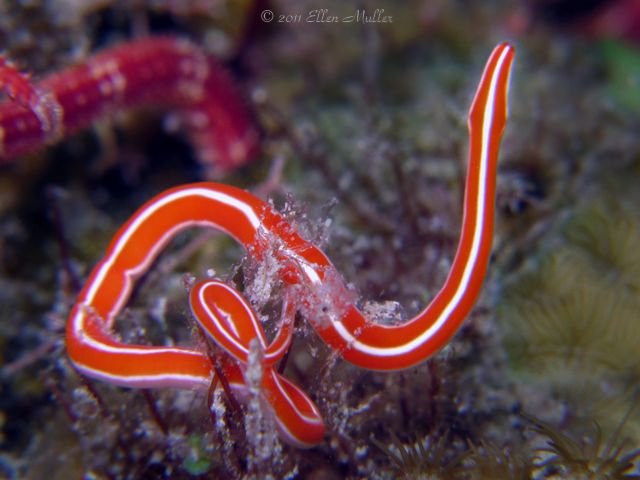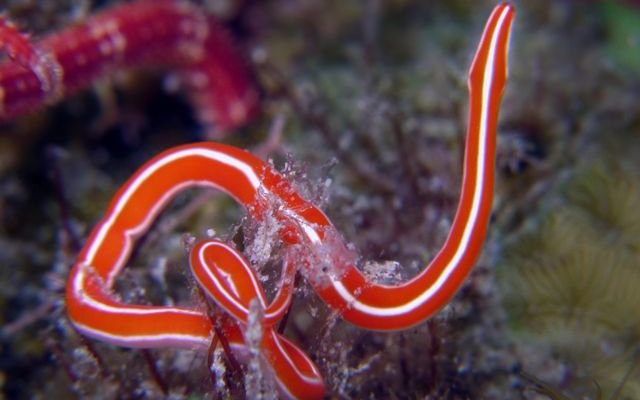
Color can tell us a lot about a species. It’s not just about aesthetics; the colors of ribbon worms are tied to their biology and ecology. For beginners, understanding these variations can unlock a world of fascinating insights about their habitats, behaviors, and even their survival strategies. So, let’s dive into the colorful world of ribbon worms, exploring why they look the way they do and what their colors really mean.
What Are Ribbon Worms?
Ribbon worms, or *Nemertea*, are soft-bodied marine animals found mainly in coastal waters around the world. They can be quite long, stretching several meters in some species, and their bodies are incredibly flexible. They look sort of like long, thin noodles—hence the name “ribbon.”
These creatures belong to a unique phylum and have a fascinating anatomy. They may not have bones like other animals, but they do have a fluid-filled cavity that helps them maintain their shape. Ribbon worms are primarily carnivorous, hunting down small fish and invertebrates using a specialized organ called a proboscis. Imagine it like a long, sticky tongue that shoots out to catch prey. Pretty cool, right?
Their vibrant colors, ranging from deep reds to bright greens and blues, help them adapt to their environments. But it’s not just for show; these colors can serve various purposes, from attracting mates to warding off predators.
Why Do Ribbon Worms Have Different Colors?
You might be wondering, why are there so many color variations in ribbon worms? Well, there are a few reasons behind this spectacular display. First and foremost, **camouflage** plays a key role. Some species have colors that blend into their surroundings, making it harder for predators to spot them. Imagine a bright green ribbon worm hiding amongst seaweed—it’s a clever disguise!
Another reason involves **mating and reproduction**. Bright colors can attract potential mates. Just like how some birds flaunt their feathers during courtship, ribbon worms use their colors to stand out during mating seasons. The more vibrant they are, the more likely they are to attract a partner.
Lastly, certain colors can act as a **warning** to predators. Worms with striking colors may signal to potential threats that they’re toxic or unpalatable. Think of it as nature’s way of saying, “Don’t eat me; I taste terrible!”
Common Color Variations Across Species
The world of ribbon worms is diverse, with each species flaunting its own unique color scheme. Here are some common color variations you might encounter:
- Red Ribbon Worm: Often found in sandy or muddy environments, these worms can be vibrant red. Their bright color may help them stand out amidst the drab ocean floor.
- Green Ribbon Worm: This species typically blends well with the seagrass and algae, providing excellent camouflage against eager predators.
- Blue Ribbon Worm: Less common, blue ribbon worms can be strikingly beautiful and are often found in deeper waters.
- Striped Ribbon Worm: Some ribbon worms sport bright stripes along their bodies, making them highly noticeable. This pattern could serve both for attraction and camouflage, depending on the habitat.
These color variations aren’t just pleasing to the eye; they have practical implications relating to habitat and survival strategies.
The Importance of Color for Habitat Adaptation
Color plays a significant role in how ribbon worms adapt to their specific habitats. For example, a ribbon worm living in a brightly lit, shallow environment might evolve vibrant colors to blend with the local flora, whereas those inhabiting deeper, dimly lit waters might have darker or more muted tones.
The adaptability of their colors also helps them survive in varying environments. Ribbon worms can be found in different coastal ecosystems, from rocky shores to sandy beaches. Each environment presents its challenges, and their colors help them thrive by providing camouflage, attracting mates, or even deterring predators.
Take a moment to consider the concept of **mimicry** as well. Some ribbon worms mimic the colors of other creatures in their environment, such as poisonous sea slugs. By doing this, they can steer clear of becoming meals themselves. It’s a fascinating example of how nature works to keep its creatures safe.
Color Variations and Ecosystem Roles
Every ribbon worm, with its unique color, plays a crucial role in the ocean ecosystem. They’re not just fascinating in their color variations; they also contribute to the biodiversity of their habitats. Ribbon worms help control populations of small marine animals, making them important players in food chains.
Their colorful presence can also indicate the health of their ecosystem. For instance, if you see a decline in certain colored species, it might suggest changes in environmental conditions, like pollution or climate shifts. So, while they may look beautiful, they also offer insights into the larger health of marine environments.
Moreover, their vibrant colors can attract not only potential mates but also a variety of marine life. Predators and prey alike are drawn to these fascinating creatures, creating a dynamic web of interactions. Understanding these relationships helps us appreciate the interconnectedness of marine life.
Researching Color in Ribbon Worms
Scientists are continuously studying ribbon worms to learn more about how their colors work and what they mean. By examining the genetics and biology behind these color variations, researchers hope to uncover more about evolution and survival strategies in marine animals.
For example, some studies focus on the pigments that produce these colors. Understanding their chemistry can reveal how these colors evolved over time and how they help ribbon worms adapt to their environments.
You might find it fascinating that color can also be influenced by environmental factors, like water temperature and salinity. These elements can alter the pigments in ribbon worms’ bodies, leading to changes in their appearances.
As you explore the world of ribbon worms, it’s essential to appreciate the ongoing research that seeks to unlock their vivid secrets. Each new discovery enhances our understanding of these incredible creatures and their roles in the ocean.
Color variations in ribbon worms not only enhance the beauty of our oceans but also play a significant role in the survival and adaptability of these fascinating creatures. From camouflage to courtship, each hue tells a story about the ribbon worm’s life.
By embracing their colorful diversity, we can gain insights into the intricate relationships within marine ecosystems. Next time you spot a ribbon worm, take a moment to appreciate the vivid colors and the reasons behind them. They’re not just worms; they’re living examples of nature’s artistry and resilience.

